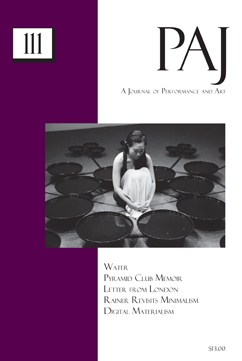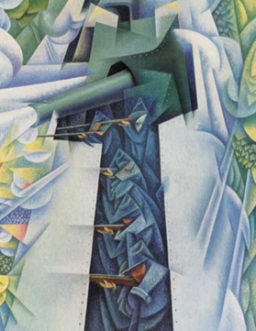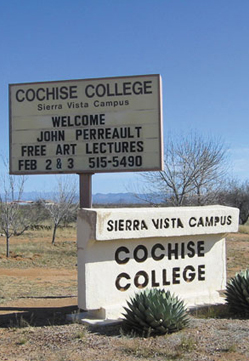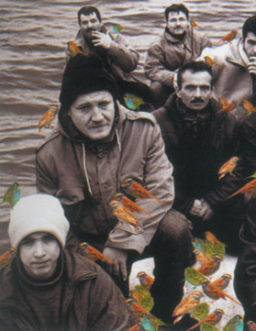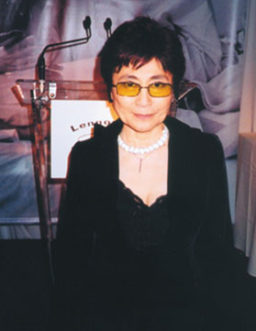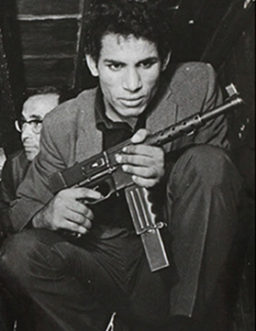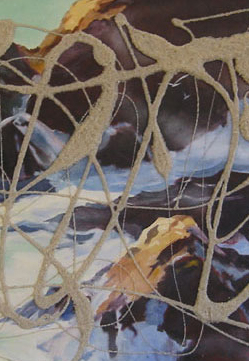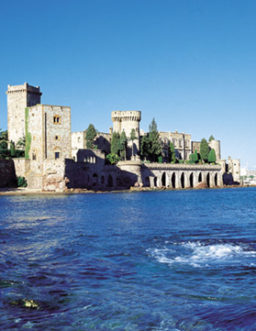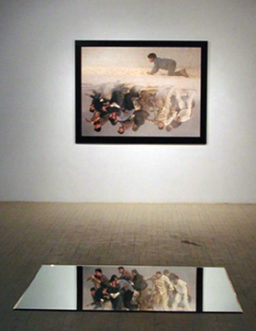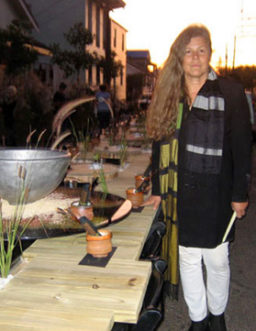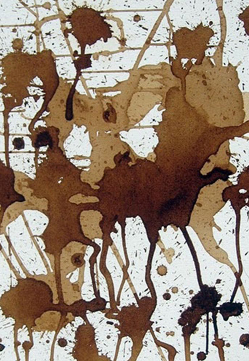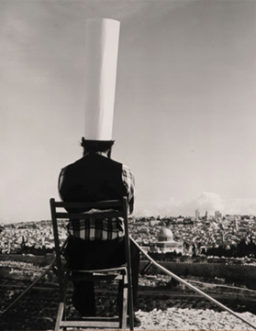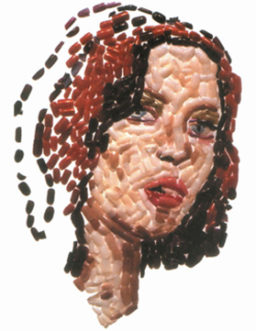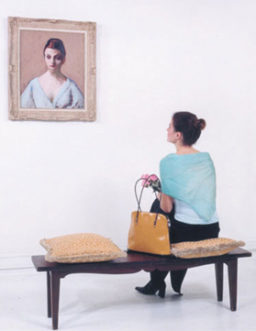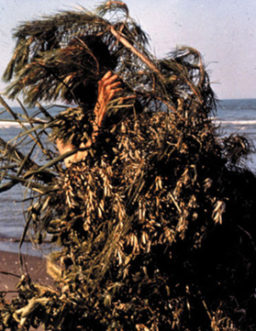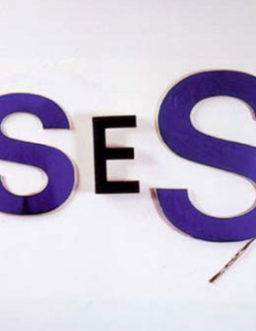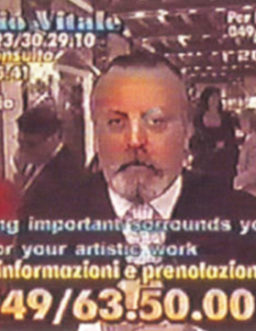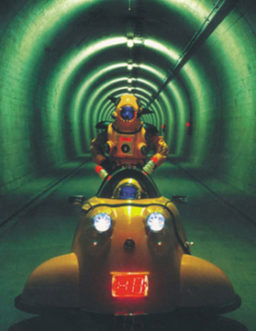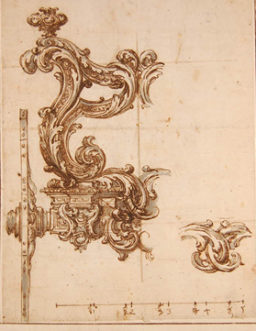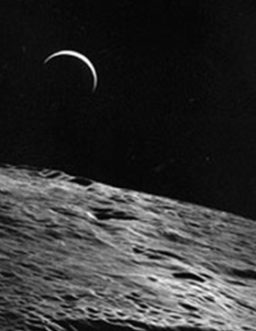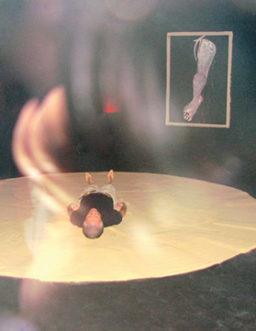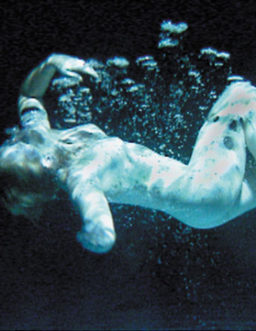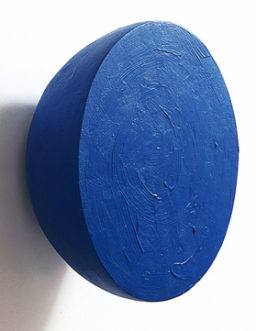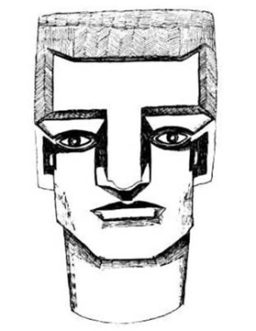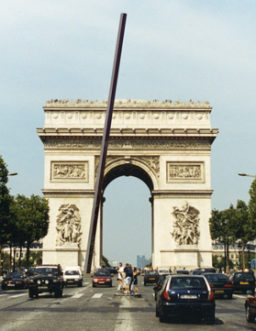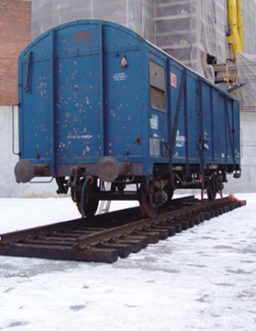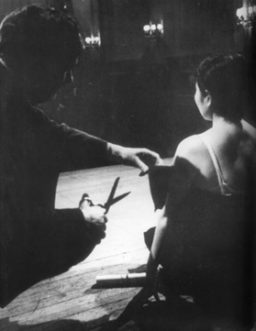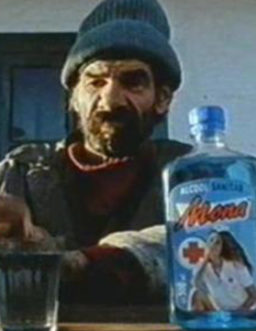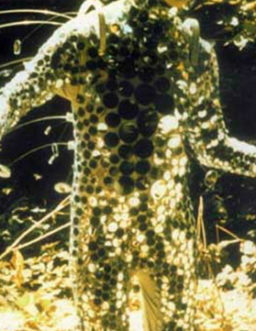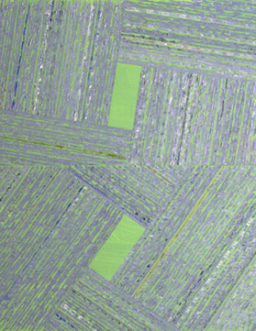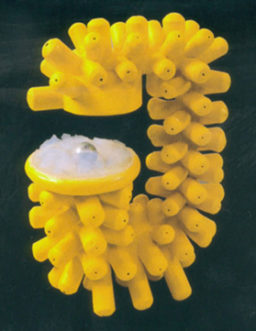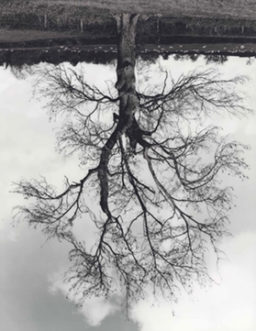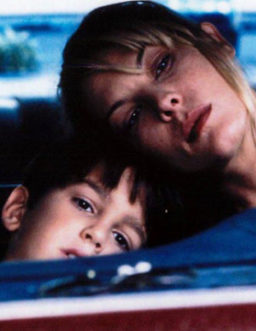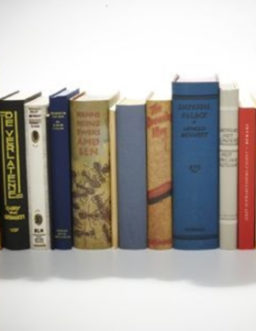The development of photography as a fine arts medium has at times been determined by a powerful woman subject. This trend is exemplified by Francine Hunter/Jungle Red Studios an exhibition of photographs of Francine Hunter aka Jungle Red at Camera Oscura (San Casciano dei Bagni, Italy) and La Divine Comtesse, an exhibition of photographs of the Countess of Castiglione at the Metropolitan Museum of Art. Paradoxically, both women are intensely private (despite a penchant for exhibitionism before the camera) and neither created her body of work for public consumption. In the case of Francine Hunter, the photographs have been sitting in boxes for decades and the Camera Oscura exhibition represents a first opportunity to view her choice work. After Castiglione’s death in 1899, most of her photographs were acquired by friend and biographer Robert de Montesquiou and only in 1975 did the Metropolitan Museum purchase 275 of the 400 known works.
Writing
Articles
Cross-Currents in Water-Based Performance
Water is a complex and contradictory medium that is both innate and foreign. An intimate part of ourselves, we are surrounded by amniotic fluid in the mother’s womb until birth. Water constitutes sixty percent of our bodies but is also incomprehensibly vast, covering seventy-one percent of the earth’s sur- face. Our daily existence depends on this element. Chlorinated drinking water pours from our taps and cleanses our bodies. Dammed rivers provide hydroelectric power and we traverse oceans to harvest sheries and trade goods. But water can never be fully dominated, and human attempts to exploit it have proved disastrous. Recent events like the Deepwater Horizon oil spill (2010) or the Fukushima Daiichi nuclear meltdown (2011) contaminate coastal waters. Global warming causes worldwide droughts and portends devastating changes for the Southern Hemisphere. From the awesome power of a storm at sea to the gentle surge of a subterranean spring, water also possesses mystery. Unpredictable and hidden qualities of water have made it an important theme in performance, both sacred and secular, since early antiquity.
Bidlo, Danto and the Art of Absence
How can an artist’s act of erasure transcend banal expression and reveal a new language of hidden forms? How can a social catastrophe shape the work of artists and prompt them to respond with diverse kinds of expression? The negative impulse, which may originate within the artist’s psyche or in the society at large, is clearly a seminal force in the process of art making. Like winter before springtime, a snowy shroud seems to balance new growth in the arts, heightening critical awareness and promoting experimentation. The themes of loss, absence and renewal are explored very differently in two recent New York exhibitions.
The Aesthetics of War
At 8:40 A.M. on September 11 I climbed to the roof of a lower east side building which houses my studio. Minutes before I heard news of the attack and listened to chaotic news reports on WBAI radio. Sirens screamed from Chrystie Street outside my window and I watched firetruck after firetruck race downtown. The sound of one siren faded seamlessly into another as the endless procession continued. I didn’t want to see the towers burning but I needed to join my fiancé in Tribeca. As I locked the studio door I noticed daylight falling on steps leading up to the roof and I involuntarily started to climb.
The High Plains Alchemy of John Perreault
The Southwest is not a place that I associate with the work of John Perreault. A New York City native, Perreault was a pioneer of the Street Works movement of the 1960s, and has since produced a rich and varied body of experimental art while writing poetry, art criticism, and fiction for the past four decades. All the while he has worked in dialogue with New York and its rigor, sophistication, superficial trends, occasional revelations and evolutions. He divides his time between a home / studio on the Lower East Side and his studio in Belport, Long Island.
Accardi and Moral: Rebel Women in Italian Art
From painting to performance, Italian avant-gardism has been characterized by a spirit of innovation. Carla Accardi, whose work is currently paired with works by Lucio Fontana at Sperone Westwater Gallery, is a magnificent case in point. While Fontana pierced the picture plane, Accardi’s subtler intervention of woven patterning (akin to the substance of canvas upon which a painting is painted) carried the discourse of painting to a new place. Sukran Moral is a Turkish-born sculptor and performance artist, living in Rome, explores issues of nomadism, cultural and sexual identity through poignant and at times humorous interventions. While belonging to different generations and working with different issues, Accardi and Moral embody a certain independence and will to transgress that unite them in the pursuit of art.
Gimme Some Truth: The LennonOno Grant for Peace in its Second Year
For a second year, artist / activist Yoko Ono voices her desire for change in the Middle East through the LennonOno Peace Prize. Israeli artist Zvi Goldstein and Palestinian artist Khalil Rabah were the inaugural recipients of the prize in 2003 when each received a $50,000 grant, supporting Ono’s belief that artwork furthers cultural understanding and lays the groundwork for peace. But in the wake of an intensely violent year and a war that has claimed over 1,000 American and some 14,000 Iraqi civilian lives, Ms. Ono has awarded the 2004 prize to non-artists. The first honoree is investigative journalist Seymour Hersh, who received the prize in recognition of his reporting on the Abu Ghraib prison abuse scandal for the New Yorker magazine. Ono awarded the second grant to Israeli Nuclear whistle-blower Mordechai Vanunu, who exposed Israel’s policy of stockpiling nuclear weapons.
Gillo Pontecorvo and the Cinema of Revolution
A theme that carried over from Pontecorvo’s direct experience during the war to his work as a film maker is the struggle against oppression in its broadest terms. As Italian Jews, his parents had a number of close scrapes with the Nazis, and Pontecorvo fought in the Italian resistance. In a discussion with the author, Pontecorvo declared that Kapò is his favorite film due to the quality and intensity of emotion that it elicits. Although Pontecorvo did not have a camp experience himself, the film raises great questions about the nature of sacrifice and purification through suffering. Kapò was made by a man who had made difficult decisions concerning life and death during wartime, and the result is a passionate, moving film.
John Perreault Seascapes
John Perreault seascapes capture something very essential about the sea. They are works that embody the quicksilver changes of the ocean, encompassing both its spatial and metaphorical complexity. Through calligraphic marks with sand and binder, painted on found seascapes and plywood panels, Perreault evokes natural rhythms of the tide, brine on the crest of a wave, the play of light on water and the movement of the sea as it covers and depletes the shore. By combining unlikely genres and techniques he attains a gestalt effect which is close to the spirit of the sea.
La Napoule Revisited
Shortly after 9.11 I won a residency to La Napoule Art Foundation. After months of breathing acrid smoke near the World Trade Center it felt vaguely surreal to arrive on the French Riviera. I was assigned a large room in the Villa Margarita with high ceilings, a marble fireplace, and banks of windows overlooking the Mediterranean and a private garden replete with palm trees, succulents and mimosa. As a conceptual artist I felt less akin to the work of artists like Picasso (late), Matisse, Renoir and Chagall who were drawn to the Riviera by its special light and colors. But such avant-gardists as Jean Cocteau and Yves Klein also heeded the siren song of the Riviera.
Impressions of Israel, Israelis and Israeli Art
In January of this year I had the opportunity to visit Israel for the first time. Like many newspaper-reading, television-watching Americans I left with some trepidation – expecting to find myself immersed in the conflict between Israelis and Palestinian militants. I expected to see civilians armed with guns and ubiquitous soldiers. El Al security in New York and frontier police in Tel Aviv certainly questioned my wife and I. But throughout our visit, which consisted of two weeks travelling between Tel Aviv, Umm El-Fahem, Jerusalem, and Eilat, we saw nary a soldier. Neither does Israeli society seem outwardly militaristic.
Yoko Ono: We’re All Water
“you are water / I’m water / we’re all water in different containers
that’s why it’s so easy to meet / someday we’ll evaporate together
but even after the water’s gone / we’ll probably point out to the containers
and say – that’s me there, that one – / we’re container minders”
Y.O.
Contemporary Art on the Côte d’Azur
La Station is a group of eight artists from Nice who have realized highly intriguing collaborative projects, and Enrico Pedrini, who introduced us, has been following their work with interest since 1997. Drive In, a 1999 exhibition featured their art on display in a subterranean parking garage. This required viewers to drive past artwork while remaining conscious of vehicles behind and ahead of them. More recently they exhibited their work at the Fondazione Morra in Naples, taking their title Uomini con i baffi from a B list movie about gangsters in Southern Italy. They arrived at the opening dressed as Neapolitan criminals from the ’70s.
Impressions of New Orleans, her Biennial and the Ritual Feast
“Let the feast begin!,” she declared and response drummers, as if from nowhere, launched into brilliant rhythms. It felt like one of those timeless moments in New Orleans, channeling the music of slave drummers who laid the groundwork for Jazz, rhythm and blues and ultimately rock’n’roll in Congo Square. Artist Heidi Domangue designed costumes out of a futuristic Midsummer Night’s Dream that were donned by wait staff who served delectable Cajun crawfish. Additional courses included oysters on the half shell and pork from pigs raised by artist Peter Nadin, whose documentary film on art and agriculture could be viewed in the bakery cottage. To my delight, spirit handler Alan Walter graced the table with absinthe, the anise wormwood liquor under ban since 1912, which has been newly legalized and is once again imbibed in the Paris of the South.
John Perreault: Protests and Beauty
Honoré de Balzac poisoned his body with demitasse after nocturnal demitasse of coffee while Victor Hugo used coffee infusions to create delicate sepia tone drawings. Filippo Tommaso Marinetti referred to himself as, “the caffeine of Europe” and now John Perreault explores this earthy stimulant turned art supply. Coffee is the first of three unhealthy materials that Perreault transforms into rich and varied works for his exhibition Protests and Beauty at Gallery 125 in Bellport, New York.
Glimpses of Milan and Naples
Milan was eerily vacant when I arrived this summer. Many of its citizens had embarked on their annual migration to beaches of Italy and beyond, leaving behind punctilious tramways, fashion houses and tourists who congregate around the Gallery and Duomo. Unlike many Italian cities, Milan is highly efficient and orderly, with broad avenues and a functioning subway. Once part of the Austro-Hungarian Empire, Milan is a stone’s throw from Switzerland, and shares a seriousness of purpose (save in August) with her northern neighbor.
Native Voice for a National Museum
A different sort of museum opened in Washington D.C. this September. The Smithsonian National Museum of the American Indian (NMAI), which is largely administered by Native Americans, seeks to balance a public understanding of Native objects between cultural interpretation, aesthetics, and anthropology. Some fifteen years in the making, and housed in multiple locations, this institution unveiled its centerpiece museum last month. NMAI occupies the last plot of land on the National Mall between The National Air and Space Museum and the U.S. Capital Building.
Franklin Furnace: Stoking the Avant-Garde
Dedicated to ephemeral and experimental art, the Franklin Furnace has proved to be a hardy perennial among New York cultural institutions. Founded by artist Martha Wilson in 1976, Franklin Furnace occupied a Tribeca loft for two decades, where it served as an early and in some cases premier venue for artists like Ida Applebroog, Eric Bogosian, Nicole Eisenman, Jenny Holzer, Barbara Kruger, Sherrie Levine, Valery Oisteanu, Krzysztof Wodiczko, and Annie Sprinkle among others. Wilson’s policy of offering complete artistic freedom to her collaborators also led to the institution being blacklisted by right-wing Christian activist groups in their crusade to dissolve the National Endowment for the Arts in the 1990s.
Nature’s Dark Side
In antiquity, Pliny the Younger witnessed the eruption of Mount Vesuvius from a ship in the Bay of Naples and for centuries, Pliny’s rather dry descriptions from letters were the only testimony by which others could understand this momentous event. Through Gohlke’s lens, we all bear witness to the eruption of Mt. Saint Helens and the cycle of destruction by which natures transforms itself. The artist’s sensitivity in framing both grand vistas and intimate environments convey a sense of nature’s infinite complexity and paradoxical order in chaos.
Reinventing the Riviera
One of the first things to strike a newcomer to the city of Nice in addition to a limpid turquoise coastline, belle epoque architecture,19th century casinos, handsome prostitutes, and delectable cuisine, is the Gallic fascination with contemporary art. Erudite lectures on Marcel Duchamp fill the airwaves at 2:00 A.M. and both city and state agencies furnish emerging artists with studio spaces in converted factory and warehouse buildings. Better still the FRAC (Fonds Regional d’Art Contemporain) buys their work. The city of Nice has a museum of modern and contemporary art that soars into the sky, faced with seemingly endless revetment of Carrara marble and smoked glass. In addition to its permanent galleries dedicated to Nouveau Réalisme, native son Yves Klein, and Pop Art, the museum features world class international programming. The museum also highlights the work of artists with southern French ties such as Ben Vautier and Bernar Venet, and exhibits work by emerging artists from Nice. During my time there, I paid studio visits to four Nice-based artists which proved most rewarding.
Gillo Pontecorvo’s Wide Blue Road
Gillo Pontecorvo’s Kapò and The Battle of Algiers were films that changed the course of political cinema by way of their artistry and psychological complexity. Unlike filmmakers Sergei Eisenstein and Roberto Rossellini, who sought to dehumanize political adversaries, Pontecorvo embraced the complexity of situations and human relationships. Pontecorvo’s own experiences as a partisan during the Second World War helped to shape his appreciation of human behavior under difficult circumstances. Kapò, Gillo Pontecorvo’s second feature film, examines the life of Edith, a young Jewish girl from Paris who is deported to a German death camp and chooses to become a Nazi appointed camp guard or Kapò in order to ensure her survival. Edith is beaten down and acculturated by the Nazis, but ultimately redeems herself by a gesture of self-sacrifice. The Battle of Algiers, Pontecorvo’s third feature film, recounts the guerrilla incidents of 1957 that ultimately led to a French colonial withdrawal from Algeria. While endorsing the Algerian people’s right to self-determination, Pontecorvo even handedly depicts the suffering and fear of everyday French pied noirs, who are victims of urban terrorism. French youth dance to the music of a juke box, families relax in a bistro, and travelers wait in the airport moments before their lives are cut short by FLN bombs. Pontecorvo’s protagonists buy progress at a dear price.
The Virtual Trailer of Art in New Orleans
I was warned by artist Keith Sonnier, himself a Louisiana native, that contemporary art has a lot of competition in New Orleans. It most certainly does. The delectable cuisine, jazz, blues, Dixie, Cajun, and Zydeco music, antebellum architecture and myriad other distractions could easily dominate a visitor’s experience of the city. Nonetheless, over the past three decades, a contemporary art scene has taken root in the Warehouse District, a post-industrial neighborhood of nineteenth century buildings west of Canal Street. Contemporary art galleries now pepper Julia Street, near the Contemporary Art Center (CAC).
Antebellum Angst in Art
In her video projection Manu’s Spleen 4, currently on view at the Dia Center for the Arts, Rosemarie Trockel revisits the story of Bertoldt Brecht’s Mother Courage. Manu, the protagonist of numerous Trockel video works, interprets the long-suffering Courage who pulled her canteen wagon along the road, servicing soldiers on both sides of the Thirty-Year War.
Personalizing a Vast Human Tragedy: The United States Holocaust Memorial Museum
I exited the elevator onto the fourth floor which documents the Nazi rise to power and the state religion of militancy, conformity, nationalism, and antisemitism. As Walter Benjamin once noted, the Third Reich attained popular support by transforming politics into art or at least spectacle (Leni Riefenstahl’s footage of the Nuremberg Rallies comes to mind). But the artifacts on display tell a lurid story of institutionalized racism that was adopted by millions of ordinary Germans. What stand out particularly in my mind are swatches of human hair of different colors and glass eyeballs used to calibrate the level of a subject’s racial purity. Particularly moving were large-scale photographs of “mixed race” couples who were forced to wear placards describing their transgressions in public places. Between photographs and artifacts, curators create a sense of the social conditions and propaganda tools which enabled Nazis to demonize Jews, Gypsies, communists, and homosexuals. National Socialist children’s books drive home a sense of the ease with which a corrupt state primes and conditions the values of its citizenry.
Frank Schroder’s Theater of Portraiture
Inside there is a single painting on the wall; the portrait of a pensive young woman in her late twenties with brown hair, wearing a slate blue dress. Facing the painting, seated on a gallery bench, is a young woman, who views the portrait on the wall. She too wears a blue dress, and her dark hair mirrors the coiffure of the artist’s subject on the wall. Is this indeed the sitter, of whom the portrait on the wall was once painted?
Geoffrey Hendricks: Fluxus Viking
There is something both archaic and timely about Geoffrey Hendricks’ performance work. By covering himself with branches, painting himself blue like the sky, or performing headstands out of doors, Hendricks reorients his relationship to nature. In so doing he acknowledges the mystery and power of nature without seeking to control it or substantially alter it (as in Land Art or much contemporary art that deals with the environment). By skewing his perception of reality, as in a headstand, Hendricks seeks to heighten both his and the viewer’s sense of being in the moment and harmonizing with the environment. By clothing himself in branches or “clouds,” Hendricks aspires to a negation of self in the face of nature.
The Sculptural Signage of Jack Pierson
Icarus, a floor piece, is spelled with mixed lettering. A blockish aluminum sans-serif “I,” with a yellow face is followed by a black metal serif “c” and an illuminated blue neon script “a.” The “r” is a massive yellow Styrofoam affair that is broken in two as though damaged in a fall. The “u” is a thin sans serif metal letter, painted Pompeiian red on the face and black on the sides and the “s” appertains to the same blockish yellow aluminum font as the “i.” The letters overlap one another and together form an arc like that of Icarus’ ascent to the heavens and fall back to earth. There is a Berniniesque quality about this piece, both in its classical allusion and through the theatrical device by which he transforms letters into theatrical players which animate his tableau.
Frédérique Nalbandian’s Vanished Mold
The Boulevard des Anglais is a seaside promenade in Nice frequented by a surprising gamut of humanity. Europeans of all stripes and colors, Americans, North Africans, Arabs, and Far Easterners armed with maps and cameras, traverse this thoroughfare, studying fellow tourists and Niçois alike. More hedonistic visitors quietly imbibe sun, sea and sky on their stroll beside the sea. Just off this busy corridor is a plain, neo-Classical building called the Galerie des Ponchettes, which, in simpler days, functioned as an enclosed fish market. Today it is a public exhibition space and during my recent visit, it was graced with an exhibition of work by Frederique Nalbandian called À creux perdu or “Vanished Mold.”
Wallace Berman: From Beat to Fluxus and Beyond
A new exhibition at Nicole Klagsbrun examines the influence of Wallace Berman on subsequent artists though featured works by Allan McCollum, Al Ruppersberg, and Andy Warhol. Berman, who shunned public attention, engaged in projects that ranged from writing rhythm and blues songs with Jimmy Witherspoon to painting Hebrew letters on parchment to publishing the underground journal Semina.
The Art of Gaming
One of the most intriguing artists in the exhibition is Sophie Calle, a French artist whose work addresses themes of voyeurism, role-playing, and exhibitionism. Since early childhood Ms. Calle has devised personal games with rules that govern her behavior. These games often but not always involve a public not privy to the rules of the game which is somehow drawn into it. In 2000, novelist Paul Auster suggested that she cultivate a place in New York and Calle selected a Soho telephone booth which she furnished with cigarettes, breath mints, and other items. Gotham Notebook, the resultant piece, documents her interactions with New Yorkers who happened upon the booth. Ms. Calle would smile at each one and document the number of people who smiled back. She would also offer items to passers-by and document their response with text and photographs. For Sophie Calle this urban sociological field game led to a heightened understanding of the neighborhood and the bystanders were forced to examine themselves and their reactions. All of this was achieved by simply changing the rules and subverting expectations.
West Berkeley: A Hotbed Still
As the BART train rolled into Berkeley Station my mind was filled with preconceptions. Student rioters, health food stores, KPFA Radio, counter culture musicians with long hair, beat poets, and drug culture inhabited my imaginary city. Physically I thought of the the Victorian homes, Spanish stucco, and rolling hills of neighboring San Francisco. But as I surfaced from the underground, a sprawling, flat, suburban Berkeley awaited me. Other than an occasional homeowner weeding his garden or adjusting her “Free Political Prisoners” sign, there were few people in the street. Making my way past wooden homes and occasional industrial buildings, I approached the alternative spaces of a highly distinctive California art scene.
Baroque as Abstraction
The Bard exhibition of Roman Baroque decorative art reflects a fascination with gesture and light that is distinctly contemporary. Stefanie Walker curated the exhibition with the belief that Gian Lorenzo Bernini, Pietro da Cortona, and Francesco Borromini largely influenced the evolution of period decorative art. These influences are certainly present, but to the extent that decorative artists were liberated from depicting the figure, they began to carry decorative motifs into the realm of abstraction. A striking affinity between Baroque decoration and the work of a contemporary artist is apparent between the design for a carriage rear by Johann Paul Schor and gestural flourishes of the painter James Nares. Schor made use of a floral-vegetal motif to transform the hard structure of a carriage into a network of vines or garlands. He carries the viewer’s eye around his design by means of a series of leaves or crests that seethe within the overall linear design. Nares, on the other hand, paints with a gestural calligraphy and the striations in his rapidly executed brushstrokes serve a similar function to interior forms of their Baroque counterparts.
Documents of a Journey through the Looking Glass
The first photographs in the series depict the rocket flight toward the moon and include images of glowing, incandescent billows of flame generated by pure oxygen and kerosene fuel at the launch pad. In certain photographs the fire appears like a neat plume of light propelling the rocket upward while in others it seems uncontrollable, like a conflagration destined to consume the rocket. In still other photographs the exhaust creates an image of beauty, not unlike the petals of an exotic flower, framed by space. The departure from earth’s atmosphere is described with photographs that document a marriage of warm saffron light with blue oxygen.
Robert Morgan’s Purgation of Nike
It is twilight outside the Lab Gallery in midtown Manhattan. I join a group of art aficionados and curious passers-by who peer through the gallery’s glass façade, at a large circle of sand, illuminated from above by a spotlight. In the foreground is a bucket of steaming water and against the far wall leans a broom with a warped handle. A video monitor perched on a stand in the corner pipes real-time images of the gallery. On the wall is a painting of what seems to be a disembodied leg. From speakers outside the gallery we hear deep, low chants, which I discover from the press release are a slowed-down voice recording of the artist reading a swim manual from the 1930s. The spotlight goes dark and when it fades back on, a barefoot man is lying barefoot on his back in the sand.
Poetic Realism in Las Vegas
Surrealism is not a foreign concept to Las Vegas. In the arc of a twenty-minute stroll along the strip one encounters the most revelatory combination of environments from a circus big top to a circle of wagon trains to a pirate battle raging on a seaside inlet. The latter includes a cast of villagers, pirates, and a newly arrived contingent of sirens (to give the performance what it had formerly lacked in sex appeal). At a mere fifty-foot distance lies Venice, complete with an ersatz Saint Mark’s Cathedral, lagoons, and gondolas. A faux Venetian palazzo houses the Guggenheim Las Vegas in deference to Peggy’s penchant for things Italian. Paris, ancient Rome, and Egypt await as the visitor makes his way through a sea of gamblers past islands of neon and gin wedding matrimonial chapel shoals.
Douglas Rosenberg’s Gesamptkunstwerk
Douglas Rosenberg makes artwork through a combination of such forms and elements as dance, cinematography, sculpture, landscape, imaging technology and sound. Working with the body, diverse media and juxtaposed elements, Rosenberg invites us to partake in narrative works that challenge traditional boundaries between art and life. His interdisciplinary approach to art making brings to mind a historical current in the arts that was popularized by the 19th century composer Richard Wagner.
Hunting for Signifiers
Woodsy/Woodzee, an installation by Francesco Simeti at the Italian Academy for Advanced Studies at Columbia University, explores the psychological underpinnings of decoration with edgy humor. To this end, Simeti transforms an Edwardian salon of Columbia’s Casa Italiana into a hunting den, of the sort that Theodore Roosevelt may have enjoyed with big game hunter cronies.
Eduardo Costa’s Marriage of Conceptual Art and Personal Sensibility
Philosophers of antiquity like Plato and Pythagorus attributed mystical properties to geometry. Throughout history it has served as the structural underpinning for architecture, and there is a current in Modern Art that celebrates geometry from Russian Constructivism to De Stijl to Bauhaus to Minimalism. Artists working with geometric shapes sought to develop a universal language of form or a non-referential object. Primary colors and unfinished industrial surfaces characterize a tendency of artists to distance themselves from the realm of personal sensibility. This is not the case in Eduardo Costa’s new geometric paintings which address the substantive aspect of paint and develop subjective palettes and imperfect geometries.
Veiled Dualities: The Portraiture of Claudio Ruggieri
Claudio Ruggieri’s new work consists of portraits of men and women, black and white, which play on the theme of duality. Ruggieri creates drawings of faces in charcoal and pen and ink. Some of the faces are simplified with hard geometry while others express subtle nuance in modelling. Certain faces are bathed in light while others are obscured by shadow. Like Balzac, Ruggieri seems to have a caring regard for all his cast of faces, be they ingenuous, worldly, or hardened by adversity, they are treated with pathos. Outwardly his faces reflect a changing ethnic and cultural fabric of the artist’s native Genoa and Europe as a whole. They further assume an archetypal dimension evoking such dualities as masculine and feminine, black and white, east and west, rich and poor.
New Arcs and Drawings by Bernar Venet
Bernar Venet is currently at work on ambitious projects, not the least of which involves a 180-foot Corten steel sculpture, weighing thirty tons, that will rest against the cornice of the Arc de Triomphe in Paris. Venet, who has been working with arcs and lines for over thirty years, breaks the neo-Classical symmetry of the Arc de Triomphe with a shaft spanning an angle from the pavement to the top of the monument. The massive stone arch is strangely liberated by the presence of this linear prop which animates space around the arc. Venet hopes to see the work realized by the 14th of July for Bastille Day, where it might become the locus of reflection on martial values in history. Napoléon commissioned the arch as a monument to the French army, but Venet through his intervention wishes to evoke a sense of the répos de l’arme, ushering in a peaceful world order.
Yoko Ono’s Freight Train at P.S. 1
Ono’s inspiration for the work came from a group of Mexican immigrants who sought clandestine passage into the United States in a freight car. They all perished when their transporters abandoned the train in the American desert. The work was first exhibited in Berlin in 2000 where it raised controversy. As a specifically German freight car, covered with German writing, it invoked memories of the holocaust and deportation trains that transported Jews and others to such death factories as Auschwitz and Treblinka. There have of course been many Freight Trains since the holocaust all over the world. As a place of confined suffering, the World Train Center in its final hours became another Freight Train as did the homes of civilians that were bombed in Afghanistan in the subsequent war. But even in the darkness there is light. The most seemingly meaningless acts of violence can serve to raise consciousness and ultimately Freight Trains could cede to a recognition of mutual dependence.
The White Paintings: Eduardo Costa and John Perreault
Appearances can be deceiving, and subtle artifice characterizes this new work by Eduardo Costa and John Perreault. Costa has produced three-dimensional objects by painting layer upon layer of acrylic paint. His solid paintings depict subject matter ranging from portraiture (heads without shoulders) to flowers, fruit, vegetables, textiles, toilet paper, and a table by Scott Burton. What seem to be sculptural objects by virtue of their corporeal nature are in fact paintings. They have a singular luminosity and weightiness that results from dense concentrations of pigment. Costa eliminates the picture plane and explores the true nature of paint through imagery that is associated with the still life tradition. Paint masquerades as flowers, vases, fruit, and vegetables in a refreshingly new way. Even Cubism failed to paint around objects in such a convincing manner.
Yoko Ono’s Cut Piece at the Ise Foundation
On July 20, 1964 in Kyoto, Japan, Yoko Ono entered a stage dressed in her finest clothes carrying scissors. She calmly made her way to center stage and invited the audience to cut off her clothing. Ono then knelt on the stage with her legs tucked beneath her and waited. One by one, members of the public mounted the stage to clip away clothing from her body with the scissors.
Asta e: Outsider Culture in Romania
The most visually striking and least narrative portrait is that of Nicu, a twenty-five-year-old fisherman. Ciulei accompanies him ice fishing with a friend as they retrieve hopelessly worn nets from the frozen river. They drag their skiff over ice so thin that it breaks beneath their feet. One sequence depicting Nicu’s return home over the ice at nightfall, has the solitary beauty of Caspar David Friedrich painting. Amber, crepuscular sunlight bathes the ice and wind rustles high reeds as Nicu pulls his boat along. There is a timelessness in Nico’s work. Late in the film, an impressionistic sequence frames the town of Sulina from the opposite bank of the Danube, with the river in the foreground, carrying frozen tiles of ice past the town. This shot cuts to images of the Sulina graveyard and photographic portraits of faces on gravestones. Nico’s fishing was a way of life for past generations as it will for those who come after him in an eternal return to rhythms of nature.
A Walk in the Woods
Sensing the Forest, an exhibition curated by Jennifer McGregor at Wave Hill, examines the varied relationship between nature and contemporary art. A diverse group of artists addresses issues ranging from mysticism to ecology to kitsch. The exhibition is housed in the Glyndor Gallery, one of two manor houses on the former Wave Hill estate, from which visitors survey landscaped gardens and a romantic belvedere overlooking the Hudson River Valley. On the opposing banks of the Hudson are wild forests and McGregor creates an interesting interaction between contemporary artists’ visions of nature, 19th century gardening, and real forests viewed from afar.
Peter Nadin: Greek Plans Gone Awry
Peter Nadin is a contemporary artist who raises questions about the Trojan Horse. What if the Greeks, once inside their giant wooden decoy, were unable to get out? This and other questions have given rise to a series of drawings and paintings that populate Nadin’s New York Studio. Work in the series describes both machinery and delicate, almost ethereal visions, between the wooden horse and its makers trapped within.
The Green Paintings of Lucio Pozzi
Lucio Pozzi’s new paintings are green. They are the green of pastures, apples, moss, and clover, but they are also the green of oceans, emeralds, envy, jade, tea leaves, and the goddess Tara. Pozzi welcomes diverse interpretations of and associations from the Green Paintings in much the same that he refuses to limit his production to any particular genre or style. Some time ago, Pozzi devised a period table of art, which includes all of the elements from which a work of art can be produced. It is chart of ingredients that can be combined to achieve different effects. For the Green Paintings he combined green with improbable chromatic bedfellows along with heavy impasto and the device of visually dividing his compositions at midpoint from top to bottom with a horizontal line.
Mimmo Roselli at OK Harris
With braided rope anchored to opposing walls of the gallery, Mimmo Roselli transforms the OK Harris gallery into a dynamic theater of mismatched vanishing points. Moving under and around the taut hemp rigging, visitors must interact with this work which effectively divides and subdivides the space.
Chinese Whispers: An Art of Displaced Perception
Chinese Whispers is a curatorial survey of Eastern European artists whose work involves issues of miscommunication. The disintegration of the former Soviet Union and Eastern Block have precipitated widespread identity crises amongst its various cultures and ethnicities. A number of artists in this exhibition hail from the former Yugoslavia, where ancestral blood feuds have resurfaced in the form of civil war. The displacement of ideology and social infrastructure, economic hardship, and violence have led to an aesthetic of the absurd which manifests itself in various ways through photography, video projects, and installation work.
Philistines at the Gateway to SoHo
I first experienced Forrest Myers’ installation The Wall as a child in the mid-seventies. I remember that it piqued my curiosity and I was drawn to it, but I didn’t really understand it. Over time, as it became part of my day to day reality, I began to appreciate its subtleties and particularly the play of light and powerful shadows that transform The Wall over the course of a day as the sun traverses the sky. I had become familiar with Forrest Myers’ Light Sculptures and came to see his wall as an extension of this work with shafts of light.
Joel Shapiro in Rome
Joel Shapiro exhibits five recent sculpture in historical sites of Rome while his work of the last ten years is the subject of an exhibition at the gallery of the American Academy. Pieces installed in the city interact with the flowing organic contours of baroque architecture or, in the case of his project in Piazza Barberini, with work by Gian Lorenzo Bernini. Shapiro conceived one piece specifically for Piazza Barberini, where it establishes a dialogue with Bernini’s Triton Fountain. The Shapiro sculpture consists of linear props that uphold broader, rectalinear elements which in the context of his oeuvre might be considered a fragmented figure. In a discussion with the author, Shapiro described the Triton Fountain as “stacked” due to the weighty basin that supports a kneeling triton. Shapiro’s airy work is closer to a constructivist sensibility, influenced by Tatlin, and Shapiro declared, “the supports are as interesting as the forms they are holding.” The basin of the Triton Fountain emits jets of water that, like Shapiro’s props, elevate the locus of attention.
The Protean Forms of John Newman
Upon viewing John Newman’s recent sculpture, one is struck by the lavish, unlikely combinations of material, color, and form. Bulbous shapes attenuate into lines, opaque bronze dissolves to glass, wicker constructions support arches of plaster, and hard metal gives way to crenelated velvet. Soft modeled forms describe serpentine flourishes in space and aggressive shafts penetrate planes. Often the work includes both highly abstract elements and others that allude directly to things of this world. Within most pieces, the theme of metamorphosis is explored with wit and ingenuity.
Rodney Graham at Dia
At Dia, Rodney Graham presents photographs of inverted trees along with technical drawings of a tower. The tower houses a camera obscura, from which an observer could monitor the growth of an oak tree which, through the refracted light of the camera obscura, appears upside down. The photographs represent hypothetical vantage points from the tower.
Luminous Motion: A Tale of Movement, Gravity and Parricide
Through a child’s eyes, Luminous Motion recounts the story of Phillip (Eric Lloyd), a ten-year-old boy who accompanies his mother (Deborah Kara Unger) as she drifts around the country in a Chevrolet Impala. After separating from Phillip’s father, mother takes her son on the road where sexual encounters with strange men and subsequent robberies enable her to buy gas for the Impala and science textbooks for Phillip. When mother and child are alone together in the car, Phillip postulates his theories on space and movement from the back seat, surrounded by planet-like mobiles that hang from the ceiling and reflect neon, moonlight, and headlights from the highway. For Phillip the Impala is like a kinetic womb, that protects and reinforces his filial bond to the mother.
Story: An Exhibition Curated by Elyse Goldberg
A reemergence of narrative content in art is examined through the work of eleven artists in Story, an exhibition curated by Elyse Goldberg. The interaction between visual art, literature, fables, and cinema is particularly interesting and precipitates imagery replete with associations and allusions. Personal narrative and the interpretation of memories, however unusual or commonplace, are another genre of story represented in the exhibition. Through a broad gamut of media, artists elucidate, ironize upon, complicate, digress from, and otherwise interpret stories with images.

